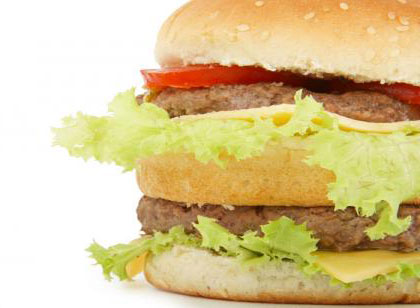History
 In the 13th century, nomadic horsemen known as Tartars are said to have placed meat under the saddles of their horses, to tenderise the meat before they scraped it back together, seasoned it and ate it raw. The ‘Steak Tartare’ recipe was brought to Hamburg by German traders — except they preferred to cook the mixture.
In the 13th century, nomadic horsemen known as Tartars are said to have placed meat under the saddles of their horses, to tenderise the meat before they scraped it back together, seasoned it and ate it raw. The ‘Steak Tartare’ recipe was brought to Hamburg by German traders — except they preferred to cook the mixture.
Legend has it that the meat recipe was brought to the USA by German immigrants,but the battle for the credit for the first burger served in a bun is keenly fought in the USA. The contenders include brothers from Ohio who sold food at Midwest fairs; a Connecticut luncheonette owner, and Texan Fletch Davis who offered the hamburger steak sandwich topped with onion as a special to his customers at the 1904 St Louis World Fair.
McDonald’s began as a hot-dog stand founded by two brothers in 1937. Salesman Ray Kroc saw massive potential in their production line methods of preparing food, and heralded a massive expansion partly thanks to the baby boomers of the 1960s. The first British McDonald’s — and 3,000th worldwide — opened in Woolwich in 1974.
Science
Choosing a good piece of meat can be difficult. It’s generally considered that the beef cuts with the most flavour are those which are ‘marbled’ in appearance, that is with white streaks of fat running through. Fat carries the flavour molecules, so it makes for tastier meat. It also affects the way flavours in food are released, allowing different tastes to emerge at different rates on the tongue.
One theory says that prehistoric people learned to savour the taste of fat because it’s such a concentrated form of energy. It wouldn’t have been easy to find back then, so if you did find some, it would be worth eating the lot. But now it’s a different story; fat is easy to get hold of, and most of us find it easy to eat too much.
Why does ketchup stick to the sides of the bottle - and then suddenly shoot out in a big dollop? It’s down to what’s called thixotropy. Ketchup is one of a range of substances which change from being very thick and gloopy, to very thin and easy to pour when they’re shaken or moved violently. Once the ketchup is on your plate, nice and still again, it goes back to being thick and gloopy.



Rate and Review
Rate this article
Review this article
Log into OpenLearn to leave reviews and join in the conversation.
Article reviews